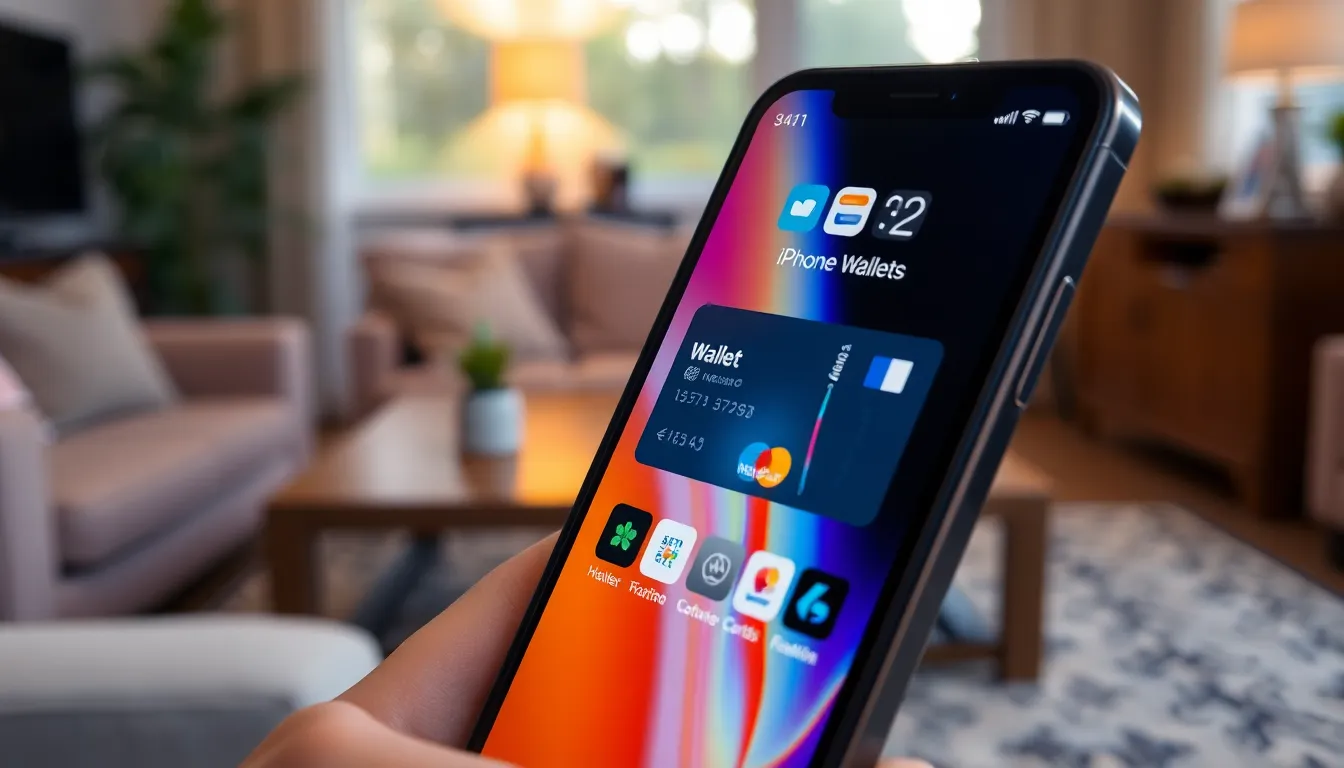Changing your card on an iPhone might sound like a task for tech wizards, but it’s simpler than finding a good Wi-Fi signal in a coffee shop. Whether you’ve got a new credit card burning a hole in your wallet or just want to switch things up, the process is quick and painless.
Imagine this: you’re at the checkout, ready to impress with your latest gadget, only to realize your payment method is outdated. Panic sets in, but fear not! With just a few taps, you can make that card switch faster than you can say “Apple Pay.” Dive into this guide and discover how to update your card effortlessly, leaving you free to focus on more important things—like deciding what to binge-watch next.
Table of Contents
ToggleUnderstanding Card Changes
Changing the payment card on an iPhone requires a few straightforward steps. First, accessing the Settings app is essential. Once there, tapping on Wallet & Apple Pay opens the payment methods section. Users should see a list of their current cards.
Editing an existing card starts with selecting the card that needs updating. It’s crucial to ensure all details, like the card number and expiration date, are accurate. After changes are made, saving the updates is necessary to keep the card in the system.
Adding a new card involves a different process. Users select “Add Card” in the Wallet & Apple Pay section. They then follow the prompts to enter card information or use the camera for scanning. Verification through the card issuer often follows, so users must ensure they complete these steps for successful addition.
Removing an outdated card offers another option. By tapping the card and selecting the “Remove Card” option, users can quickly delete it from their iPhone. Confirming the removal ensures that no unintended charges occur from the outdated method.
For Apple Pay, ensuring the correct card is set as the default improves the checkout experience. Users head to Wallet & Apple Pay settings, select their preferred card, and tap “Default Card.” This selection streamlines purchases and makes payment processing more efficient.
Lastly, users may check for updates regularly. App updates can introduce new features or modify how card changes work. Keeping the device up to date ensures an optimal user experience when managing payment methods on their iPhones.
Accessing Your Wallet App

Accessing the Wallet app on an iPhone is simple and straightforward. Users quickly navigate to the app, allowing them to manage their payment cards effectively.
Opening the Wallet App
To open the Wallet app, locate its icon on the home screen. Tapping the icon launches the app. Users can also swipe down on the home screen and type “Wallet” into the search bar to find it quickly. Once opened, the app displays all available cards in a streamlined format.
Selecting the Card to Change
Next, selecting the card to change is crucial. Users scroll through the cards displayed to find the one they wish to modify. Tapping the chosen card reveals its details prominently. This view shows options to edit or remove the card. After finding the right one, they can proceed with the desired changes right away.
Steps to Change the Card
Changing a card on an iPhone involves a series of straightforward steps. Users can easily update their payment information with just a few taps.
Removing the Old Card
To begin, users should open the Wallet app. Locating the old card starts the process. Tapping on the card reveals its information. Then, choosing the “Remove Card” option deletes it from the wallet. Once confirmed, the outdated card disappears, ensuring that the new payment information is prioritized. Regular checks ensure users manage their finances effectively.
Adding a New Card
Next, users can add a new card effortlessly. Starting in the Wallet app, tapping the “+” icon prompts card addition. Users can either enter card details manually or scan the card for convenience. Verification of the card follows, and then users receive a notification when the card is ready for use. Setting this newly added card as the default ensures a streamlined checkout experience. Regular updates help maintain functionality within the app.
Verifying Card Changes
Verifying card changes on an iPhone ensures that users maintain up-to-date payment information. After adding or removing a card in the Wallet app, tapping on the card provides access to its details. Users need to check that the card’s information, such as the card number and expiration date, appears correctly.
Once the details are correct, a user must ensure that the card is marked as the default for payments. This step simplifies future transactions, especially at checkout. When using Apple Pay, the system prompts for verification through Face ID, Touch ID, or a passcode.
For added security, users may want to receive confirmation via email or notifications after changing their cards. To manage this, checking the settings in the Wallet & Apple Pay section allows users to modify notification preferences.
Reviewing transaction history also serves as a useful method for verifying successful updates. Users can access their Apple Pay transaction logs directly within the Wallet app. This log displays previous purchases, making it easier to spot any discrepancies or issues with card usage.
Lastly, maintaining regular updates in the Wallet app supports overall functionality. Ensuring that the iPhone is updated to the latest iOS version optimizes performance benefits and security enhancements. Regular verification of card information cultivates good financial management practices, further benefiting users in their everyday transactions.
Changing a payment card on an iPhone is a simple process that can be completed in just a few steps. By keeping payment information current users can ensure a hassle-free checkout experience every time. Regularly updating card details and verifying changes add an extra layer of security while managing finances effectively.
With the Wallet app and Apple Pay’s security features users can confidently handle their payment methods. Staying proactive about these updates not only enhances convenience but also promotes better financial management. Embracing these practices makes it easier to focus on what truly matters in daily life.




